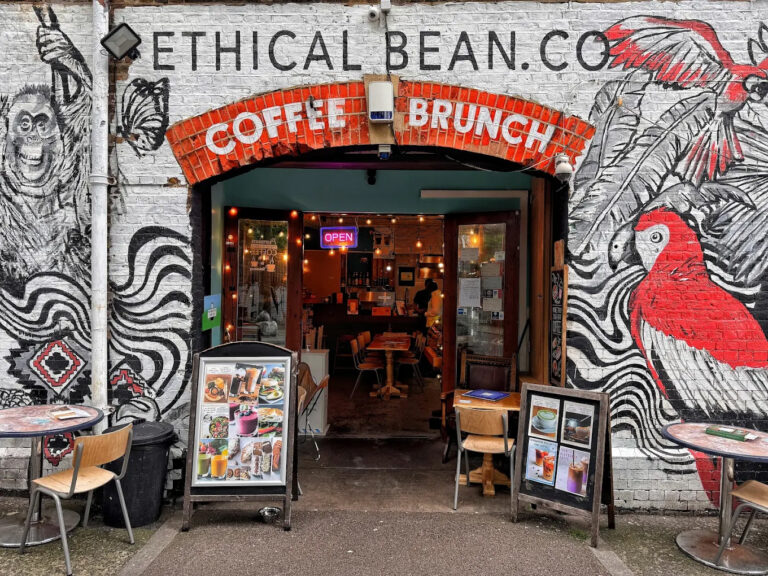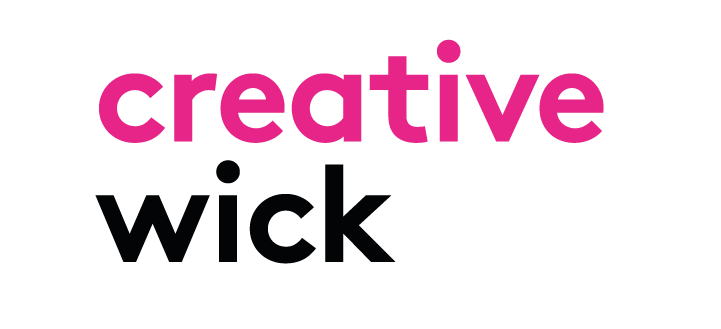
Review: Kokin – tuna meets fire at The Stratford
The new sushi restaurant now at the iconic skyscraper’s 7th floor and terrace
Can you firstly tell us a bit of background about the name?
It was just a spontaneous brain fart from Robin. We were doing a project where someone asked what the company was called and Robin just blurted out Marshmallow Laser Feast as the first thing that came into his head. That kind of sums up the beauty of Robin’s talent. He’s tapped into this creative energy and none of it is premeditated, it just erupts out of him.
What do you each bring to the business?
The reason the company started was to channel any profits we had into our passion projects. We’d been nurturing our own things within other companies, so this was an opportunity to channel all of our energy into making artwork.
There’s a strong theme in your work; science, art, technology. How do you encapsulate this ethos?
The ability to create dramatic perspective shifts and tell stories that weren’t possible in other mediums is at the foundation of what we’re doing. For example, virtual reality can trick your brain into believing that a virtual world is real enough for you to feel a sense of presence there. When have you ever had an experience where you’re not in your body? If you do psychedelics it’s something you can relate to, but most people aren’t doing that.
So, with that in mind, it’s this sort of passion for science, you can think of it as shaking that feeling of human superiority. That the human sensory perspective is concrete, because science is constantly designing instruments that can peer into the depths of reality which exists way beyond the limits of our senses.
Then, when you take the headset off, how does that affect the way you feel about yourself and your own body or who you are in relation to trees, and rivers? A lot of our projects are themed around breath, which is a great one for dissolving the boundary of your being. I guess the use of this technology is just a great way to explore the big questions of who you are, and what is the nature of reality.

So you are giving people existential experiences?
I kind of believe that there’s an experiential story to be told there that can offer an opportunity to shift how you see yourself in relationship to the more-than-human world. I don’t think there’s any judgment in the work, but that somehow the experiences that we’re creating are always focused on real places. So we go to the Amazon and 3D-scan a tree, and then you experience that one-to-one scale in virtual reality. There’s a whole array of technology that can give you a sense of an experience of that tree as a living, breathing being. It’s like an immersive experience that’s based on an interpretation of that tree, but there’s a poetry to it, and an element where you feel like you have some kind of encounter with it. I think that can actually change the way you think and certainly the way you feel. You’ve created a connection.
You create a connection with nature via technology?
Well, I suppose the essence of it is that we are in nature and we’re inseparable from the whole thing. Maybe by using immersive technology, you’re able to blur boundaries and smear those edges of your perception. Embodying other non-human life forms is super interesting because it’s not a ‘real’ thing. There is this Thomas Nagel article that’s famous in consciousness studies called, ‘What’s it like to be a bat?’ It’s an analogy.

There’s so much research and advancement in technology these days, so how has that in turn changed your work over the years?
By nurturing experimentation and exploring our artistic visions, that creates a feedback loop. There’s this point at which it feels more like something’s possessed you. It’s like you’ve jumped into a river and the river is the idea, and it’s taking you on this journey. What we’ve been doing is just being as open as possible, plus fuelling the potential of that river, so it’s just got bigger and bigger, and it’s constantly expanding. It’s also something that doesn’t feel like it comes from you as an individual as there’s always loads of collaboration, too. Recently we were working with poet Daisy Lafarge. That was an amazing experience, because we did a few interviews with Merlin Sheldrake, David Abram, Katie Field, and Stephan Harding and they are all wonderful scientists and philosophers. The project was called ‘Observations On Being’, the idea was if you could detach yourself from your body and follow these different rivers that connects different beings. We interviewed all the different scientists, and then working with Daisy she came back with these beautiful poems. We’re focused on the visual element, but for this project it was to music by John Hopkins, the techno musician. It all took place in a cemetery part of Coventry City of Culture.
How has being in Hackney Wick inspired your work?
The spiritual events centre Aho Studio is a good example of a really grounded little community that erupted here. I met some really interesting musicians there like Sophia. You hear this woman that can sing like a bird, who was born in the Amazon. To be able to be transported spontaneously to that completely different culture was beautiful. There’s stuff like that happening all the time. With Yolanda and Gaia Pulses, she’s making her artwork through food. All of these unique individuals make Hackney Wick what it is.
Tell us about your most recent work.
We created ‘We Live in an Ocean of Air’, and it was showing at Saatchi Gallery two years ago. It’s been in a box because of Covid, but now it’s started touring again at the Phi Centre in Canada and across North America.

Do you always have researchers, or work with a scientist or an institution on these projects?
Whoever’s working on the project team will do the research. Then there will always be a scientist that we interview, or who comes on board the project. We’ve learned that scientists at the very top of their game are normally really busy doing their research, so you’ve got to treat them like a sacred goblet, one that you’re only allowed to touch once a year. We do big interviews where we record everything, so we get quite a body of research to work with that way.
And would you like to live in a VR world one day?
I don’t think so. I’m not itching to put a headset on all day and have a screen attached to my face. We’ve got this exponential growth of graphics cards technology, quantum computing is coming back which is insane, and then there are wetware ideas on how you plug directly into the human brain. These things are galloping forward. When you watch a film now, you can’t differentiate between what’s real and what’s not. Computer games are on that trajectory too, so within our lifetimes it might achieve a level of quality where you can’t tell the difference between real and virtual. But if it’s just focused on my eyeballs, what about the other senses? Imagine actually being able feel the temperature of a table or to smell a flower! Then you get to the point where virtual reality becomes as real as reality, so you end up back where you started. This is the thing we keep going back to. Perhaps this technology should be seen more like a wake-up to the awe and wonder of ‘I can’t believe I exist in the first place’. If we can just give someone a nudge towards walking around with a bit more awareness of ‘oh, I can’t believe this!’ in their daily life then that’d be a good goal.

What’s the next project you’ve got coming up, or is it top secret?
So, the most exciting project is called Evolver and it’s about the human body. Our thought process was is if you are walking in the woods at night and there’s a bit of a fog. Maybe the moon’s risen just a touch and it’s pink, and there’s this strange, surreal moody night-time forestscape. But what if instead of being in a forest, you realise you are in a human body scaled up to the size of a forest, and all of the trees and bushes are internal organs and structures. This giant human ecosystem is alive because you can feel it breathing, but because it’s so big, it’s breathing really slowly. So that’s what we’re doing at the moment, and we’ve got all this crazy medical data. That process is an example of doing a deep dive into the science, trying to find the right institutions and partners that are scanning the human body at super-high resolutions. Then there’s a whole software development workflow, figuring out how to deal with these colossal datasets. Finally there are fluid simulations; in order to get the flow of oxygen to this body, we’ve based it all on the movement of a fluid. It will be shown in a huge hangar, and people will be able to walk around in VR exploring it all.
Think about when you breathe in, if you could see that, it would be like a tornado forming, so when the in-breath happens, it’s like there’s an ocean of air above the body, and it starts to spiral down. When seen on that scale, it feels like a tornado that then flows into a river. We want it to feel like this familiar, but alien world, so the speed of the flow will match the speed of a river flowing.
Because it’s in VR, you can step inside the river, and it flows around you. There’s a strong musical element to it too so you embody this fluid dynamic energy that flows through life. As you move through space, you stimulate particles, but the movement of those particles also make sounds. The whole thing is like this big visual instrument.


The new sushi restaurant now at the iconic skyscraper’s 7th floor and terrace

Exploring the health advantages of belonging to something bigger than ourselves

Your timely reminder to go visit these amazing restaurants, bars and cafes this summer while we wait for better bridge access…
A joint venture in collaborative local media from:


In partnership with

Regulated by IMRESSS, the Independent Monitor for the Press CIC.
For more info on our complaints policy, or to make a complaint, visit FAQ.
